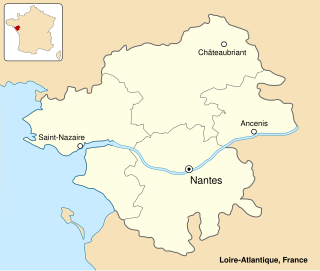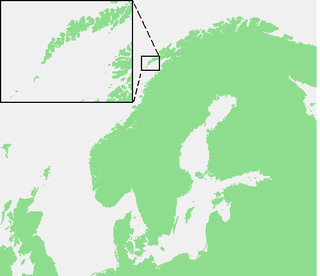Related Research Articles

A commando is a combatant, or operative of an elite light infantry or special operations force using dedicated operation techniques.

The Corps of Royal Marines (RM) is an amphibious light infantry and also one of the five fighting arms of the Royal Navy. The marines can trace their origins back to the formation of the English Army's "Duke of York and Albany's maritime regiment of Foot" at the grounds of the Honourable Artillery Company on 28 October 1664.

The St Nazaire Raid or Operation Chariot was a British amphibious attack on the heavily defended Normandie dry dock at St Nazaire in German-occupied France during the Second World War. The operation was undertaken by the Royal Navy and British Commandos under the auspices of Combined Operations Headquarters on 28 March 1942. St Nazaire was targeted because the loss of its dry dock would force any large German warship in need of repairs, such as Tirpitz, sister ship of Bismarck, to return to home waters by running the gauntlet of the Home Fleet of the Royal Navy and other British forces, via the English Channel or the GIUK gap.

The Commandos, also known as the British Commandos, were formed during the Second World War in June 1940, following a request from the Prime Minister of the United Kingdom, Winston Churchill, for a force that could carry out raids against German-occupied Europe. Initially drawn from within the British Army from soldiers who volunteered for the Special Service Brigade, the Commandos' ranks would eventually be filled by members of all branches of the British Armed Forces and a number of foreign volunteers from German-occupied countries. By the end of the war 25,000 men had passed through the Commando course at Achnacarry. This total includes not only the British volunteers, but volunteers from Greece, France, Belgium, Netherlands, Canada, Norway, Poland, and the United States Army Rangers and US Marine Corps Raiders, which were modelled on the Commandos.

Operation Archery, also known as the Måløy Raid, was a British Combined Operations raid during World War II against German positions on the island of Vågsøy, Norway, on 27 December 1941.

Operation Claymore was a British commando raid on the Norwegian Lofoten Islands during the Second World War. The Lofoten Islands were an important centre for the production of fish oil and glycerine, used in the German war economy. The landings were carried out on 4 March 1941, by the men of No. 3 Commando, No. 4 Commando, a Royal Engineers section and 52 men from the Norwegian Independent Company 1. Supported by the 6th Destroyer Flotilla and two troop transports of the Royal Navy, the force made an unopposed landing and generally continued to meet no opposition. The original plan was to avoid contact with German forces and inflict the maximum of damage to German-controlled industry. They achieved their objective of destroying fish oil factories and some 3,600 t of oil and glycerine. The British experienced only one accident; an officer injuring himself with his own revolver and returned with some 228 German prisoners, 314 loyal Norwegian volunteers and a number of Quisling regime collaborators.

Operation Anklet was the codename given to a British Commando raid during the Second World War. The raid on the Lofoten Islands was carried out in December 1941, by 300 men from No. 12 Commando and the Norwegian Independent Company 1. The landing party was supported by 22 ships from three navies.
148 (Meiktila) Commando Forward Observation Battery is a specialist Naval Gunfire Support Forward Observation (NGSFO) unit within 29 Commando Regiment Royal Artillery of 3 Commando Brigade Royal Marines.
29 Commando, Royal Artillery is the Commando-trained unit of the British Army's Royal Artillery, based in Plymouth. The regiment is under the operational control of 3 Commando Brigade, to which it provides artillery support and gunnery observation.
Operation Bulmus 6, also known as the Green Island Raid, was a military raid conducted by special operations units of the Israel Defense Forces (IDF) against an Egyptian early warning radar and ELINT station located on a small artificial island in the Gulf of Suez on the night of July 19, 1969.
Operation 34A was a highly classified United States program of covert actions against the Democratic Republic of Vietnam, consisting of agent team insertions, aerial reconnaissance missions and naval sabotage operations.

Shayetet 13 is a unit of the Israeli Navy and one of the primary sayeret (reconnaissance) units of the Israel Defense Forces. Shayetet 13 specializes in sea-to-land incursions, counter-terrorism, sabotage, maritime intelligence gathering, maritime hostage rescue, and boarding. The unit is trained for sea, air and land actions. The unit has taken part in almost all of Israel's major wars, as well as other actions.
No. 2 Commando was a battalion-sized British Commando unit of the British Army during the Second World War. The first No.2 Commando was formed on 22 June 1940 for a parachuting role at Cambrai Barracks, Perham Down, near Tidworth, Hants. The unit at the time consisted of four troops: 'A', 'B', 'C' and 'D'. Eventually 11 troops were raised. On 21 November, it was re-designated as the 11th Special Air Service (SAS) Battalion and eventually re-designated 1st Parachute Battalion. After their re-designation as the 11th SAS Battalion, a second No. 2 Commando was formed. This No. 2 Commando was the leading commando unit in the St Nazaire Raid and suffered heavy casualties. Those who made it back from St Nazaire rejoined the few who had not gone on the raid, and the commando was reinforced by the first intake of volunteers from the new Commando Basic Training Centre at Achnacarry. No. 2 Commando then went on to serve in the Mediterranean, Sicily, Yugoslavia, and Albania, before being disbanded in 1946.
Operation Postmaster was a British special operation conducted on the Spanish island of Fernando Po, now known as Bioko, off West Africa in the Gulf of Guinea, during the Second World War. The mission was carried out by the Small Scale Raiding Force (SSRF) and the Special Operations Executive (SOE) in January 1942. Their objective was to board the Italian and German ships in the harbour and sail them to Lagos. The SSRF under the command of Major Gus March-Phillipps left Britain in August 1941 and sailed the Brixham trawler, Maid Honour, to the Spanish colony.

Operation Checkmate was the codename for a raid on shipping at Haugesund, Norway in April 1943 during the Second World War by British Commandos. The raiding party consisted of seven men of No. 14 (Arctic) Commando who managed to sink one ship using limpet mines. While waiting in hiding for the transport back to the United Kingdom they were captured on 14 and 15 May 1943 and eventually taken to Sachsenhausen and Belsen concentration camps where six of them were executed, victims of the Commando Order. The seventh man died of typhus.
Operation Acid Drop was a British Commando raid during the Second World War. This was the first commando raid carried out by No. 5 Commando and consisted of two simultaneous operations over the night of 30/31 August 1941. Each raid consisted of one officer and 14 men, their targets were the beaches at Hardelot and Merlimont in the Pas-de-Calais, France with the aim of carrying out reconnaissance and if possible, to capture a German soldier. It was a hit and run type raid with only 30 minutes ashore but in the event neither party encountered any Germans.
Operation Dryad was a raid on the Casquets lighthouse in the Channel Islands by British Commandos during World War II. The Commandos captured the lighthouse and its occupants and departed leaving no trace that anyone had ever been there.
Operation Farrier was a raid by British Commandos during the Second World War on the Yugoslavian island of Mljet.

The Raid on Santorini took place on 24 April 1944 as part of the Mediterranean Campaign in World War II. It was conducted by the British Special Boat Service, against the mixed German and Italian garrison on the island of Santorini (Thera) in the Aegean Sea. The raid was made in tandem with similar operations at the islands of Ios, Mykonos and Amorgos that aimed to destroy Axis naval observation posts and radio stations on the Cycladic islands.
References
- ↑ Steen, E. A., Marinens operasjoner fra Baser i Storbritannia, Gyldendal norsk forlag, 1963
- ↑ "Naval Codewords". Naval History. Retrieved 11 June 2010.